First Snow begins a Duck Walk on the Emerald Necklace
I always like to lead walks focusing on waterfowl. The birds are pretty predictable, and often allow for good looks for everyone. I had scouted for this walk several times in the last week, and all the ducks and other waterfowl I had seen were on full display this morning. The weather was not as bad as had been predicted but did make for some slow and careful walking for the sixteen of us that spent more than two hours on the walk.
We started by circumnavigating Leverett Pond and by the end had six species of ducks plus a few other birds. This pond has become a regular home to Wood ducks; recently they have bred here and in the winter months more that 50 have been recorded. Today we had great looks at a smaller number:
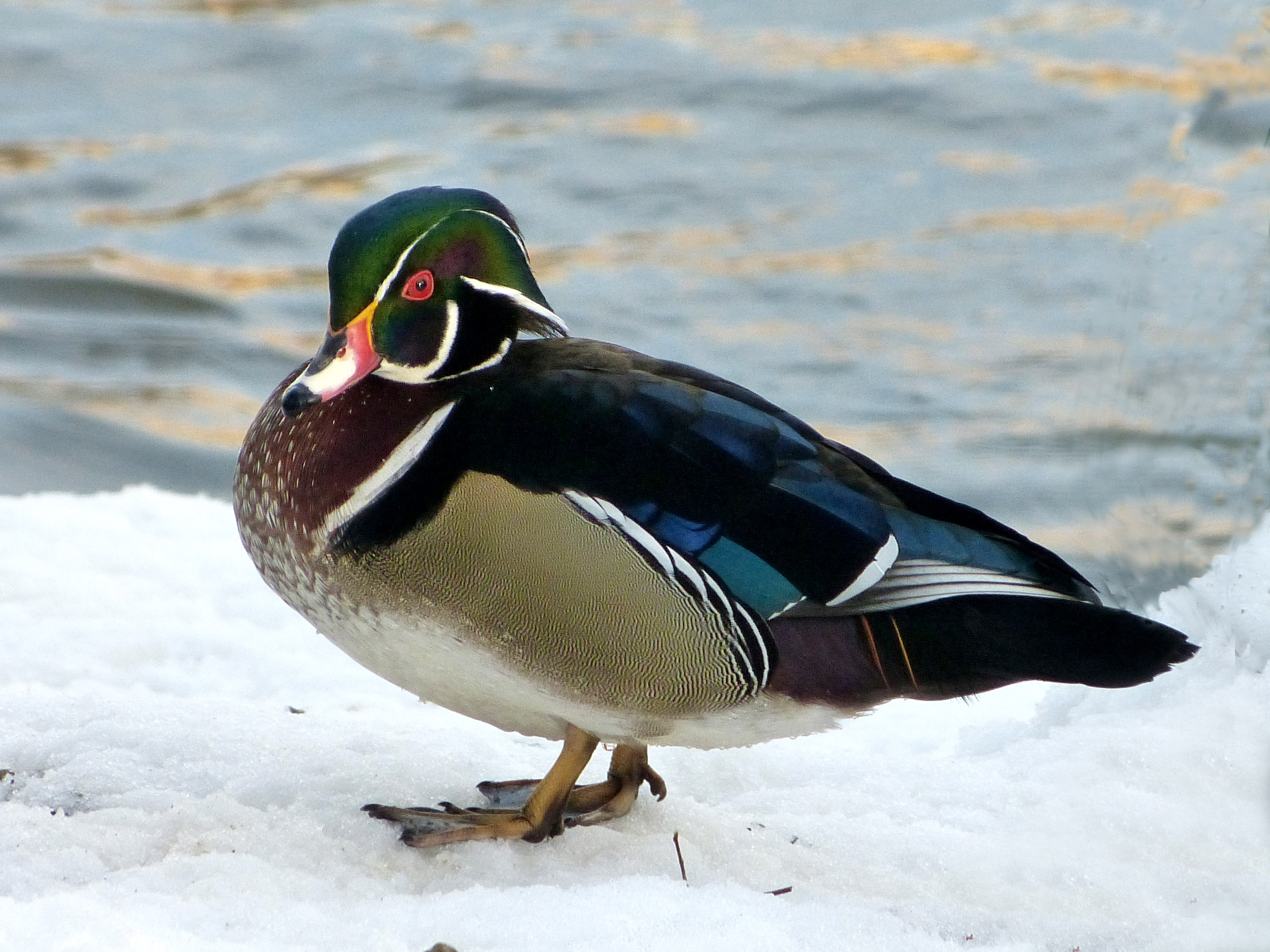
The male Wood Duck is one of the most spectacular ducks in the world.
One in our group asserted that the female was equally lovely, if not more so. She has a point:
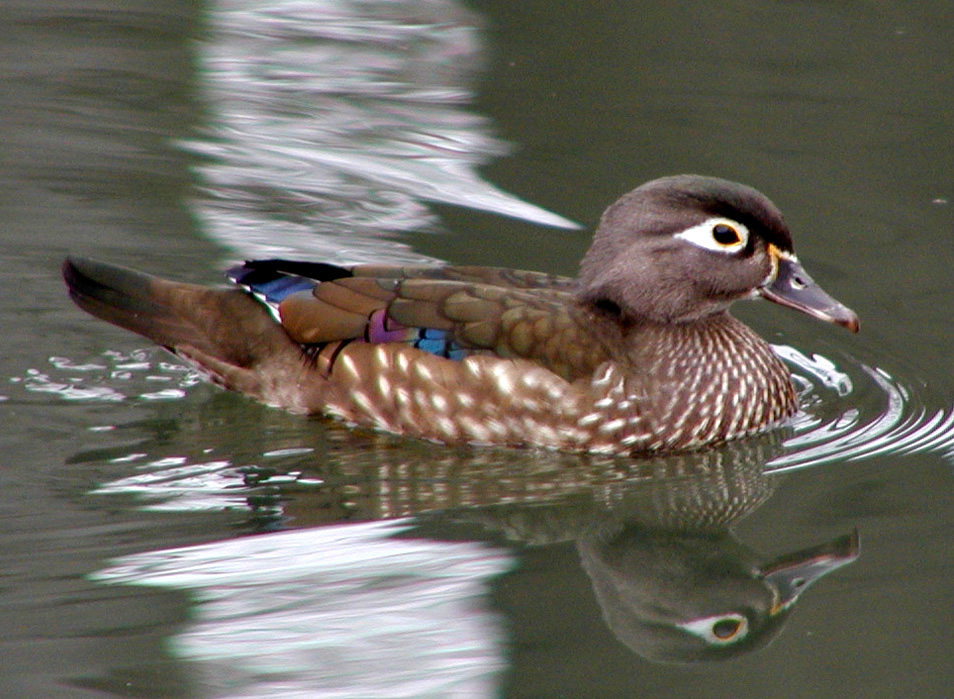
Female Wood Duck
Mixed in with the large flotilla of ducks on the pond were several Hooded Mergansers, cavorting with each other:
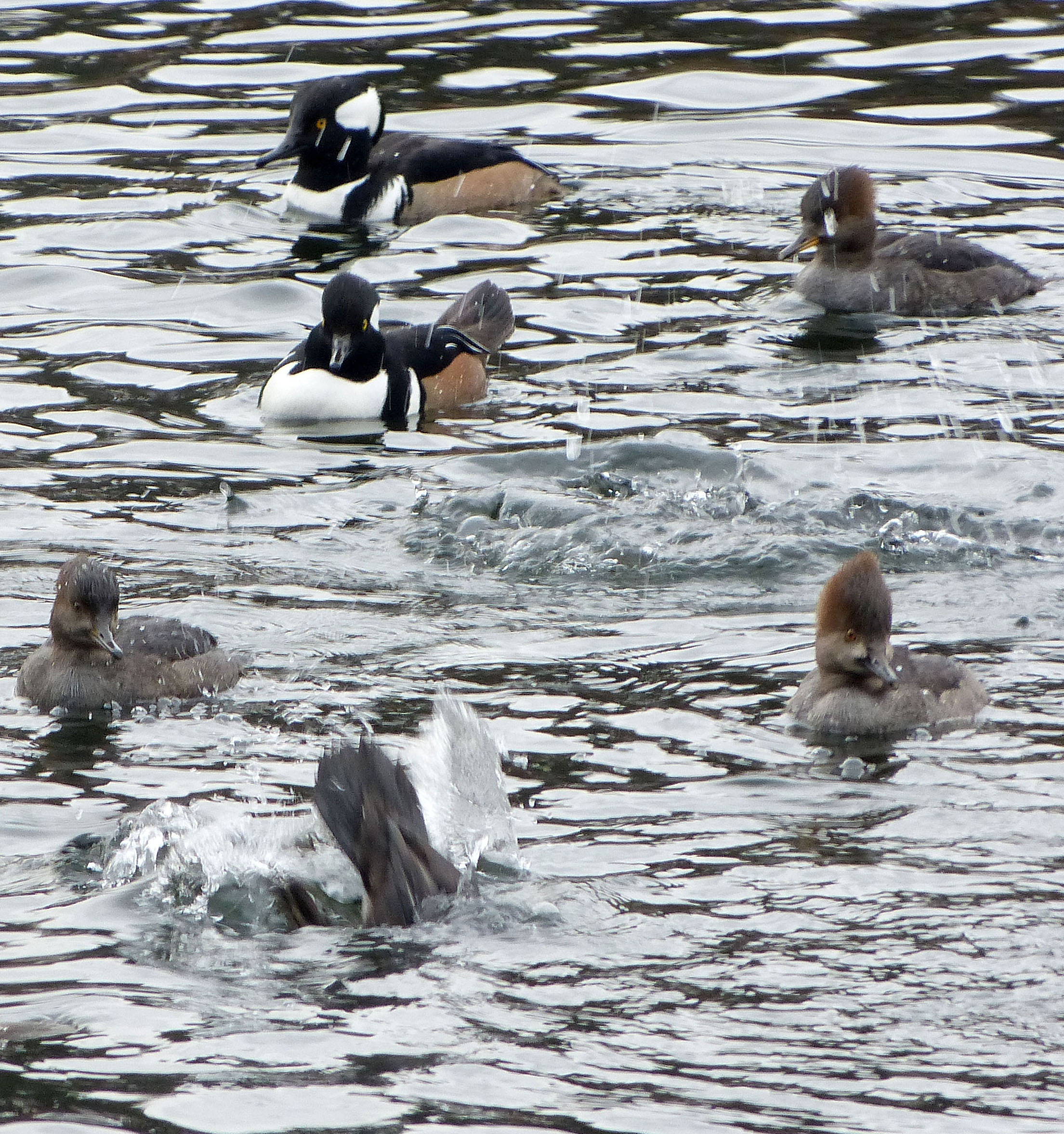
Hooded Mergansers often display and perform for each other; but their actions are not just for play, mating season is on the way.
The male of this species is stunning when he raises his crest:
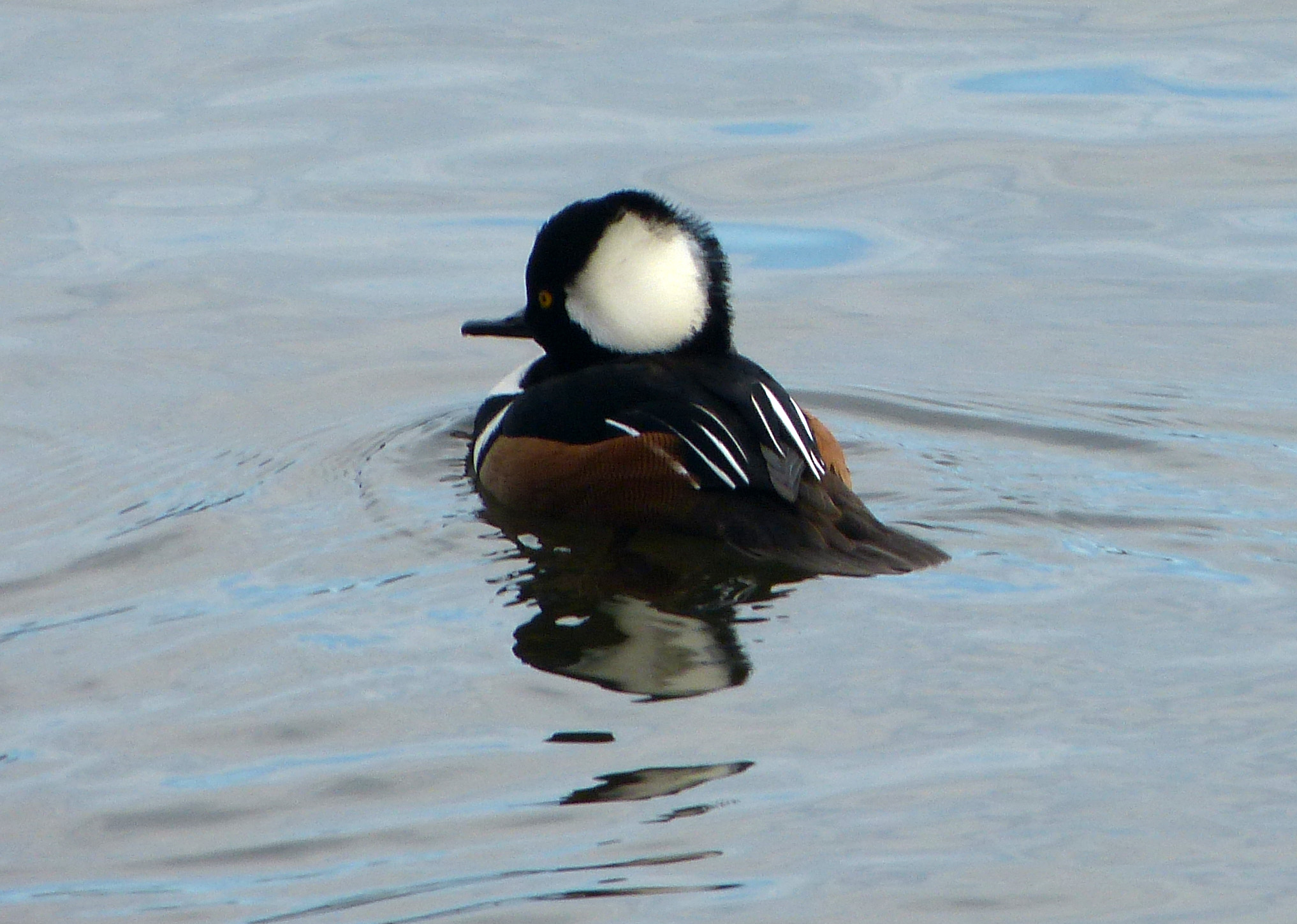
Male Hooded Merganser, the smallest of the three mergansers that can be seen locally.
Other ducks of note included Ring-necked Ducks:
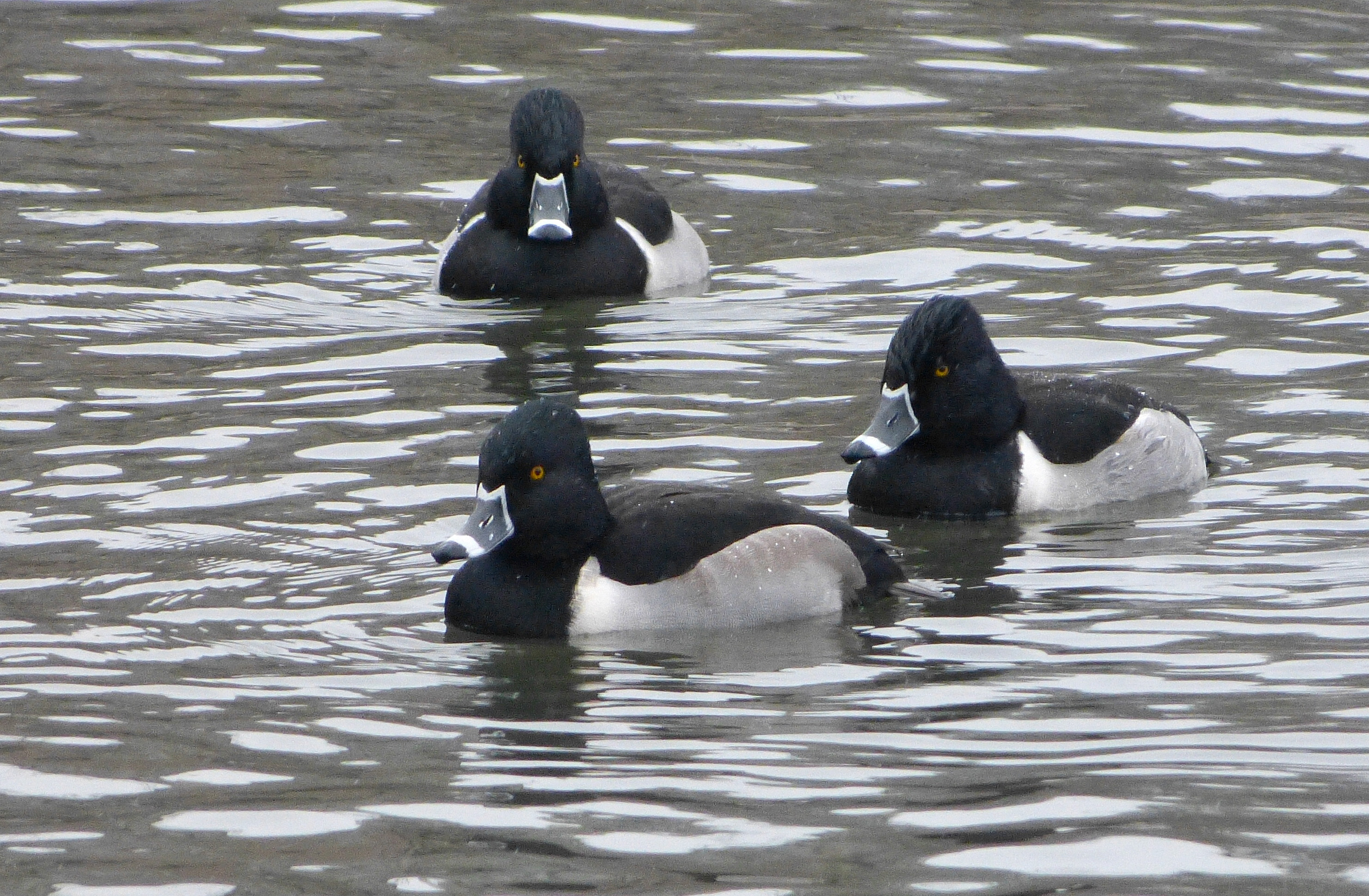
The taxonomists who discovered and named this duck in the nineteenth century were working from museum specimens where the brown collar on the bird was visible. Thus they gave it the ring-necked designation rather than ring-billed; a much better name when seen in the field.
The female is less distinctly marked, but still has the telltale bill marking:
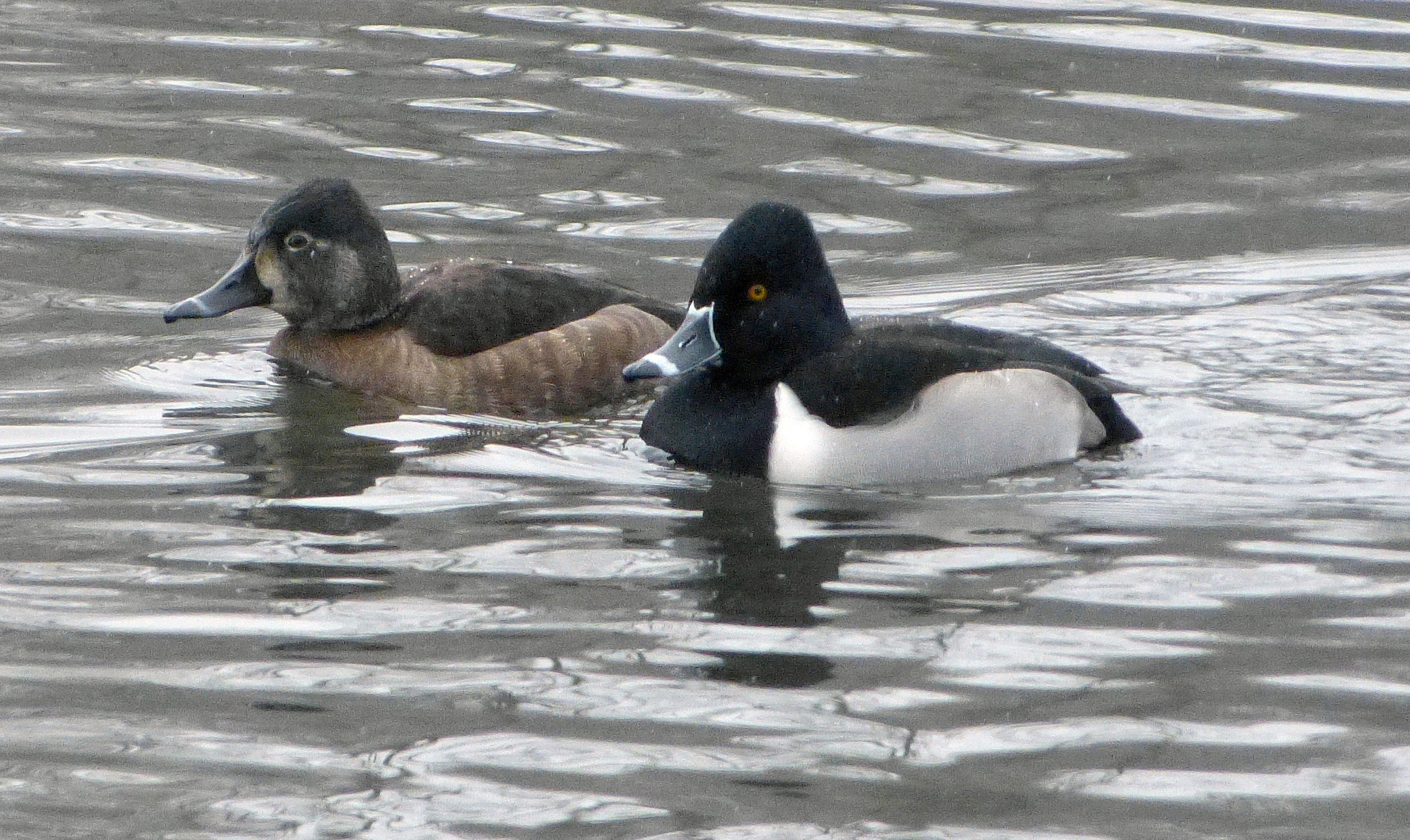
A pair of Ring-necked Ducks
We located a few American Black Ducks among the simillarily feathered female Mallards:
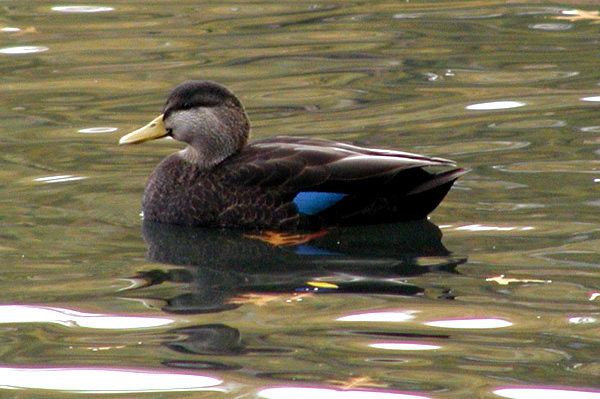
American Black Duck; darker and a bit larger than the Mallard female, and with a greenish-yellow bill. Note also the bright blue speculum on the wing without a white lining.
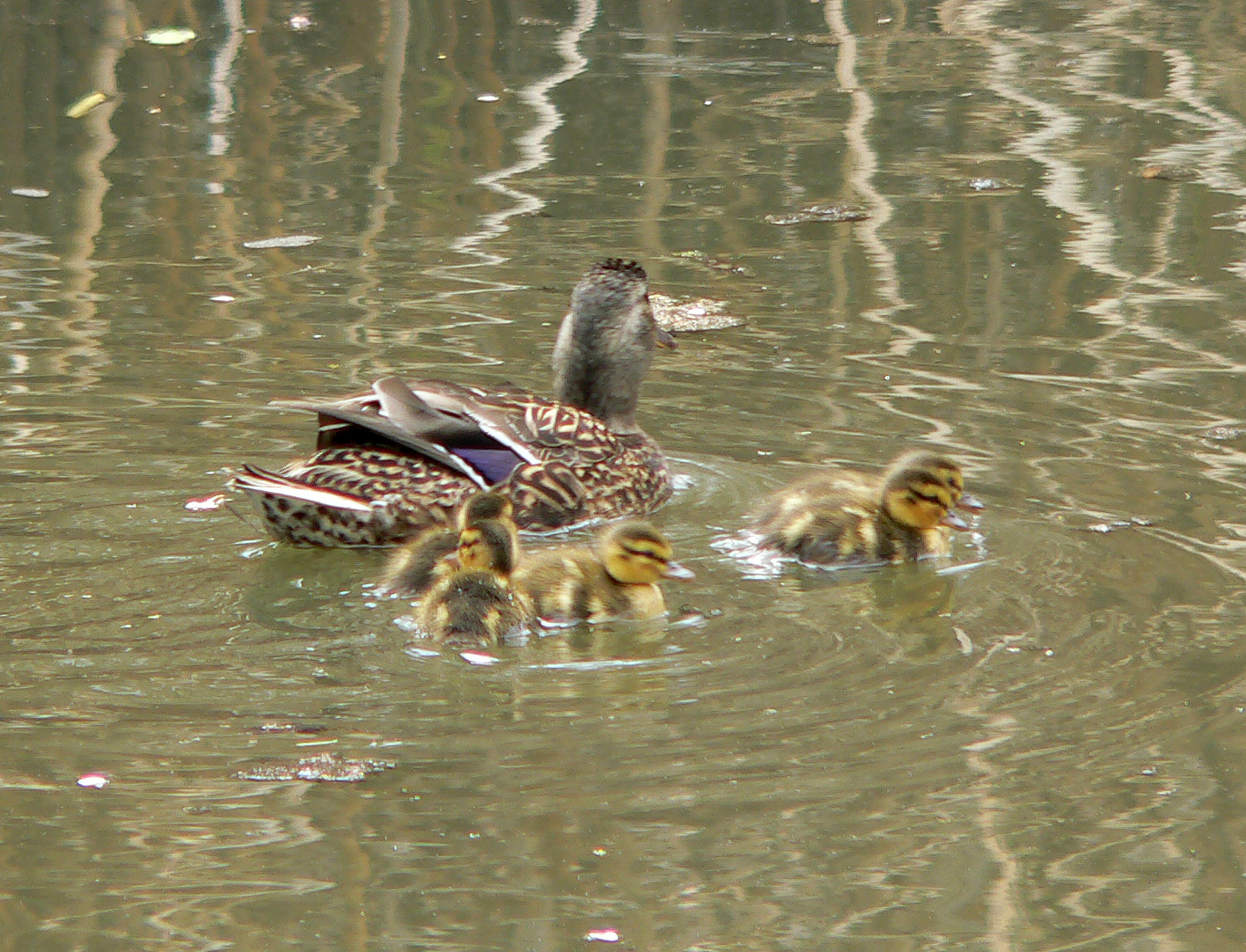
This shot of a female Mallard with chicks shows the different bill color, the overall lighter appearance and the white lining on the wing speculum.
Finally, one sharp observer noticed a peculiar looking Mallard among the rest:

This male Mallard has a white breast area; indicating that it has some domestic duck genes in it’s pedigree.
At this point the group had milked Leverett Pond for all there was, so we walked the half mile or so to Jamaica Pond, where I had seen some other species on my scouting runs. Before I could point out a bird sitting at the end of the small island in this large kettle pond, a birder called out “cormorant”! She was right, but instead of the common summer resident on the pond, Double-crested Cormorant, this one had been identified a week ago as a Great Cormorant, rare on the pond. Here is a “documentation” shot of it (read not very good photo but suitable to identify the bird):


This juvenile bird shows the white belly and a bit of the white and yellow patches beneath the gray bill; all features that separate it from a juvenile Double-crested Cormorant. This species is usually found on salt water along the northern New England coast.
Our next new sighting looked something like this:


I asked the group what was especially notable about these small ducks. “The pointed tails”, several responded, setting me up to identify them by their colloquial name, “stifftail”. Ruddy Ducks breed in northwestern North America, but some faithfully migrate to Jamaica Pond every fall and stay as long as there is open water. On closer inspection, they are a well-patterned bird:


A male Ruddy Duck, top, with two females below, in non-breeding plumage. No, they don’t always have their tails in the air. Note also the blue-gray coloration of the male’s bill.
Last year a single male Ruddy remained on Jamaica Pond until June, and though there were no females present, he converted to breeding plumage (hope springs eternal):
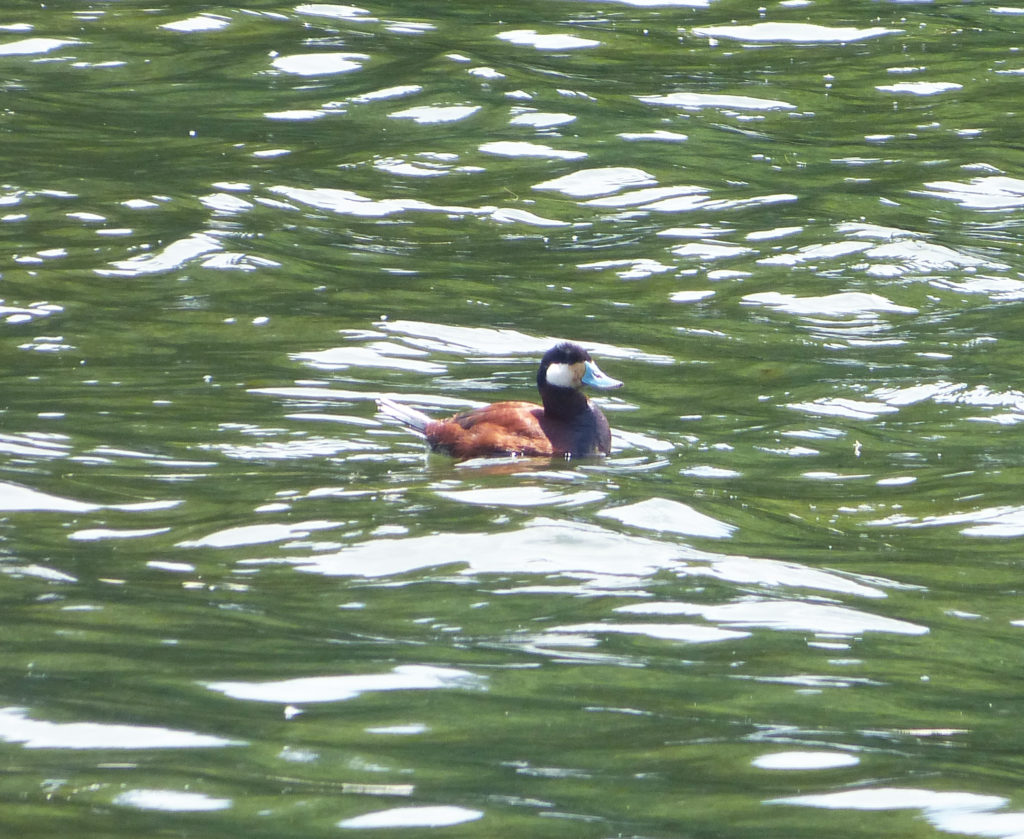
Male Ruddy Duck in breeding plumage, showing why they are called “ruddy” and also displaying it’s “cartoonishly bold, sky-blue bill“
The other reliable winter visitor to Jamaica Pond is the American Coot:

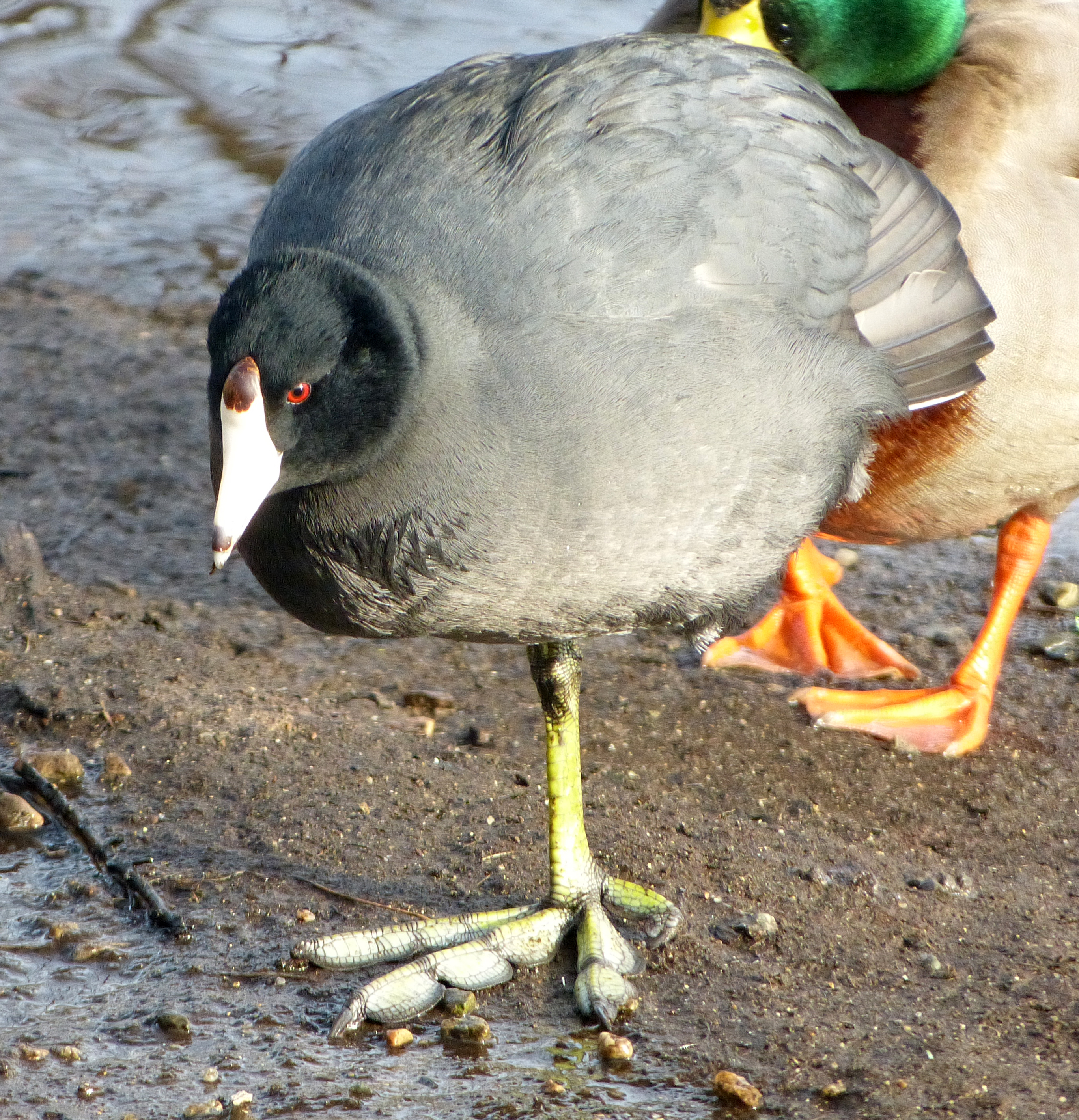
Note the lobed toes and sharp white beak on this American Coot, in contrast to the webbed feet and broad bill on duck species.
While coots do walk on land, as seen above, they are most often seen bobbing about in the water:
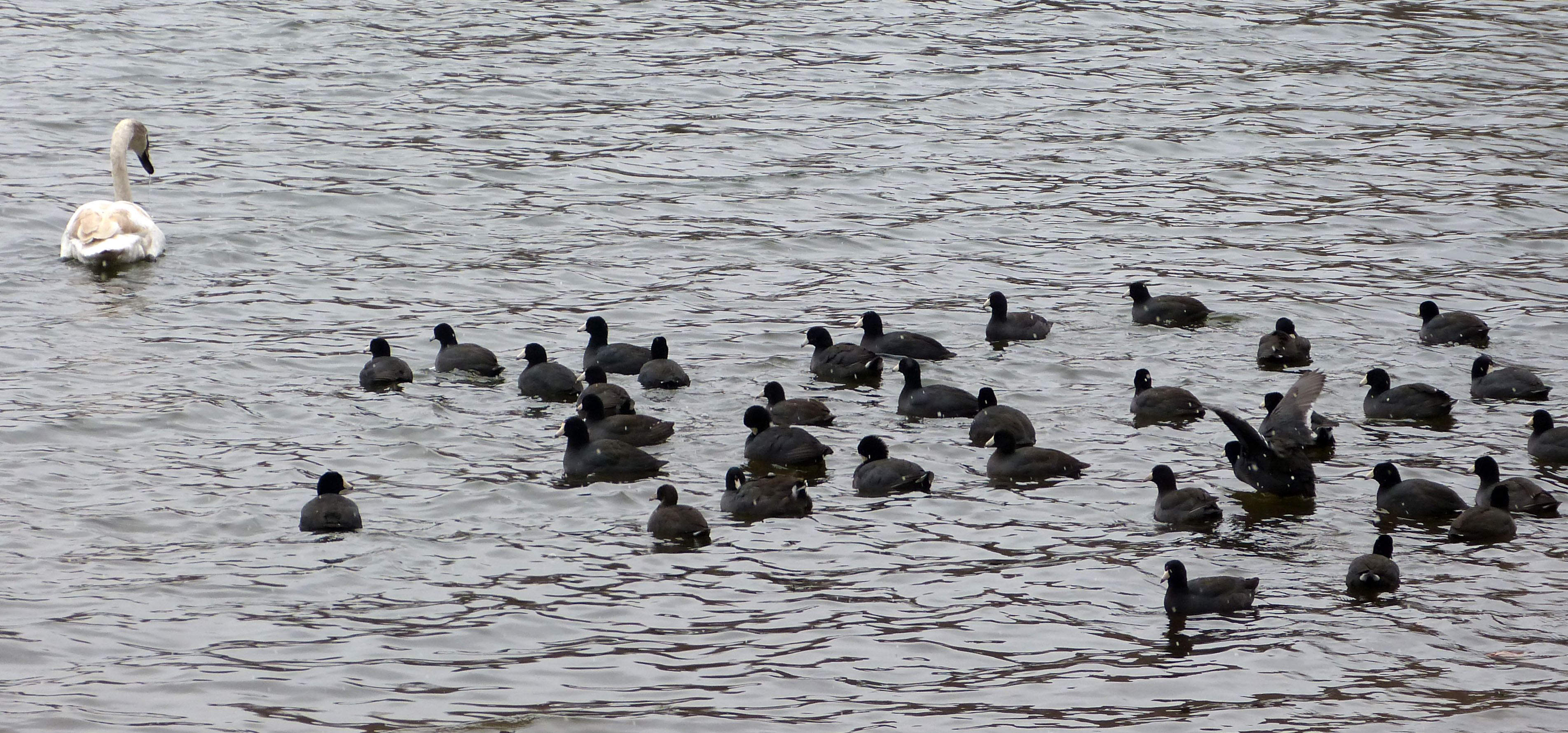

Coots are common on the pond in winter, but this season they were joined by an uncommon freshwater bird:
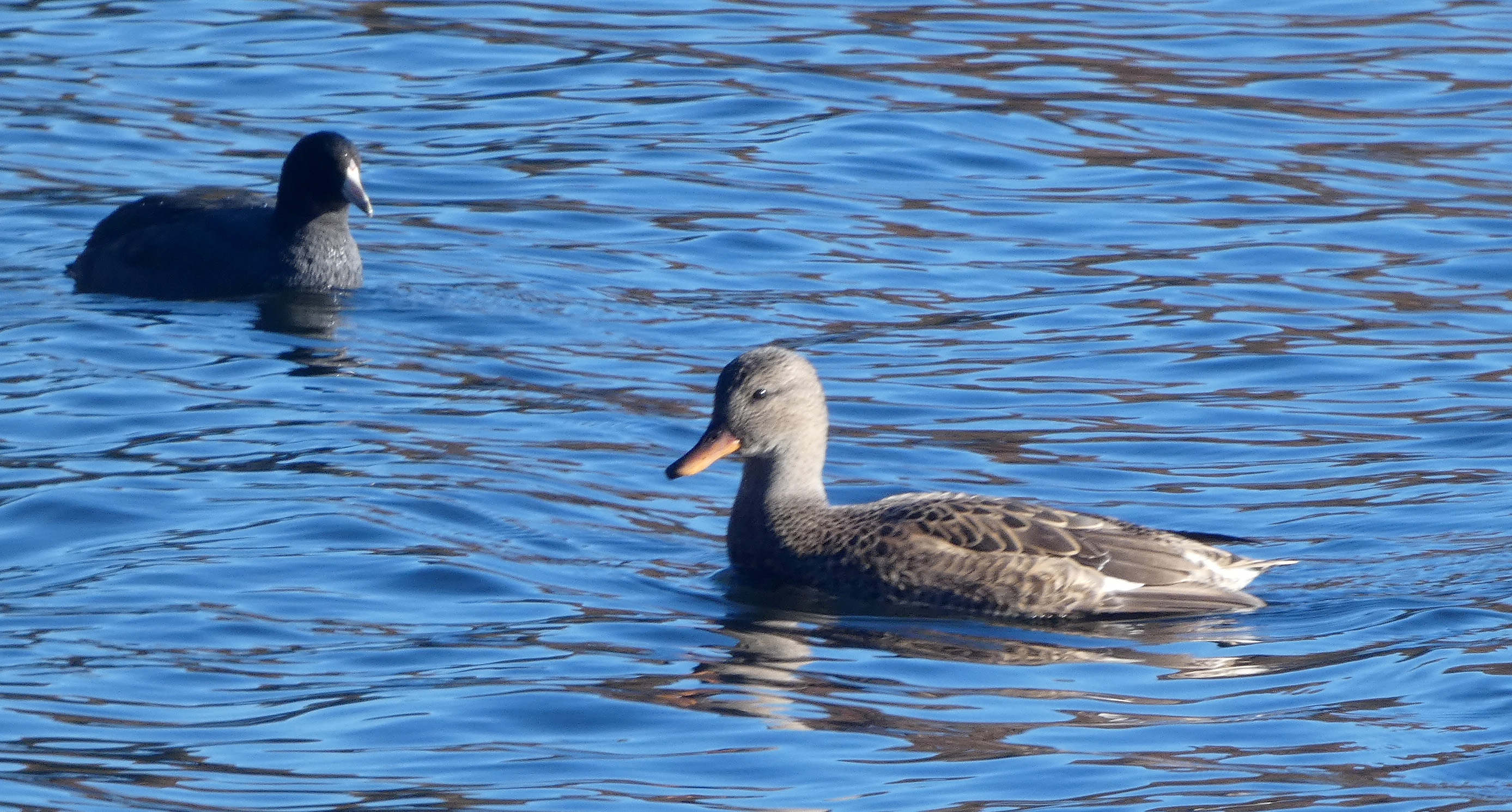

This female Gadwall has been hanging out with a raft of coots for at least two weeks. She can be easily dismissed as a female Mallard, but is smaller, and has an orange edge on a slim bill and a patch of white on her secondary feathers.
Gadwall are relatively common in coastal areas like Plum Island, but are rare on the necklace. In April 2015, a male of this subtle species showed up on one of the small ponds in the Arnold Arboretum:

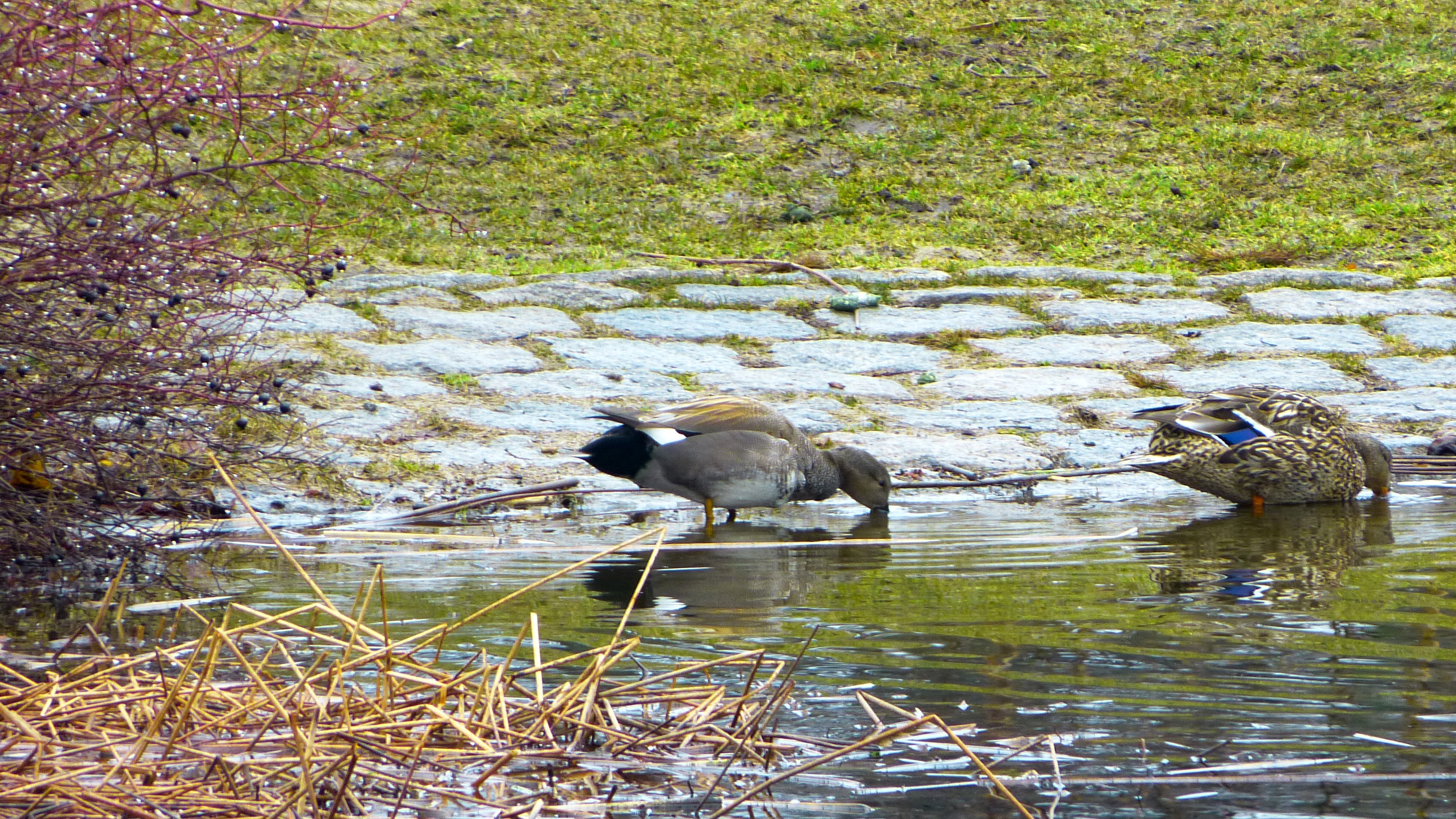
Male Gadwall, left, next to a female Mallard on Dawson Pond. Note the identifying black tail, not seen on the female of the species.
There was one more type of waterfowl I had located earlier on the pond, and I hoped to show it to the group. We found it, but it was on the far side from where we were viewing so people had to take it mostly on faith. Here are two shots I got of this Common Loon just the day before, when it was a bit more cooperative:
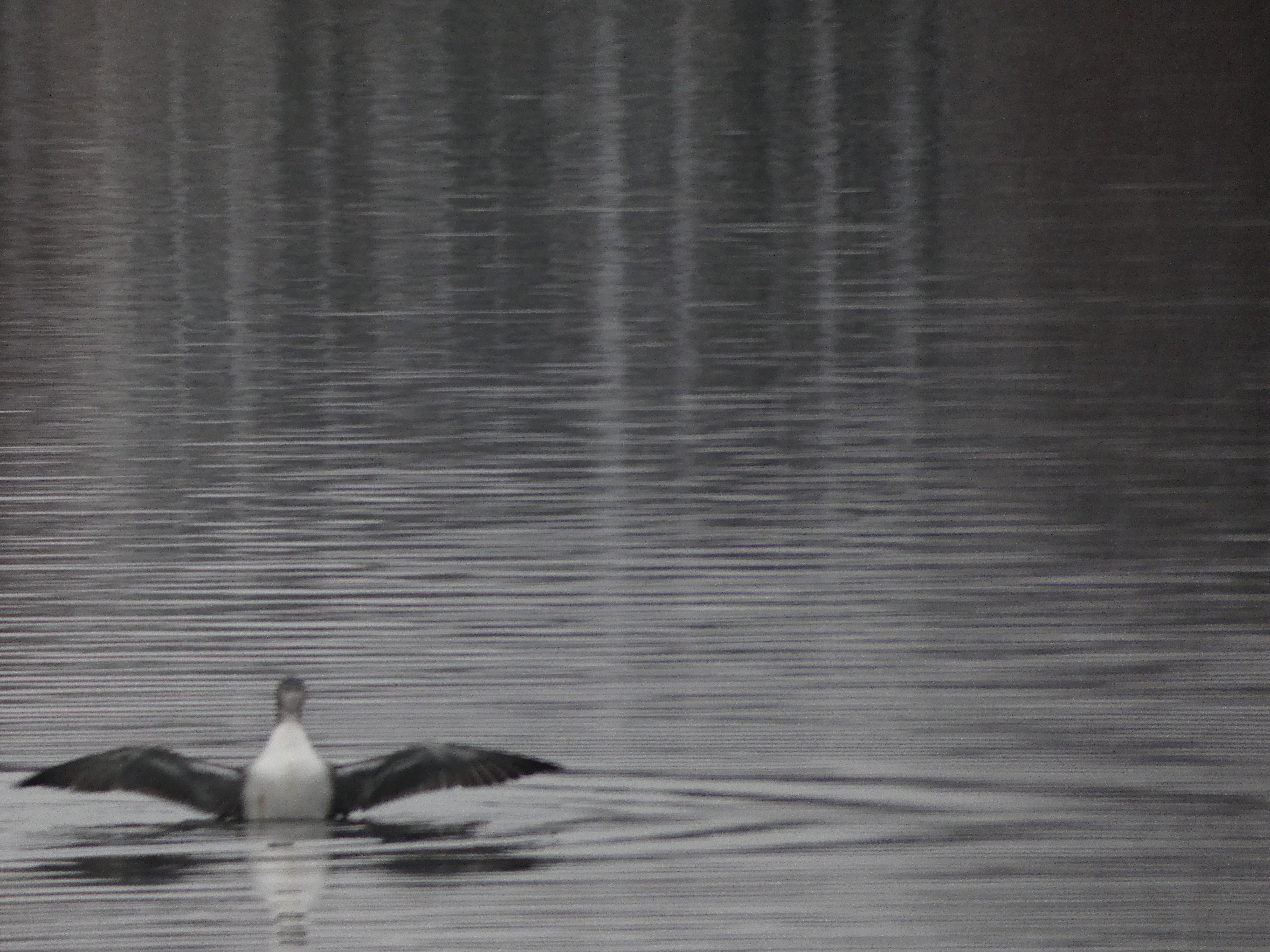
Common Loon, showing an all white breast and belly
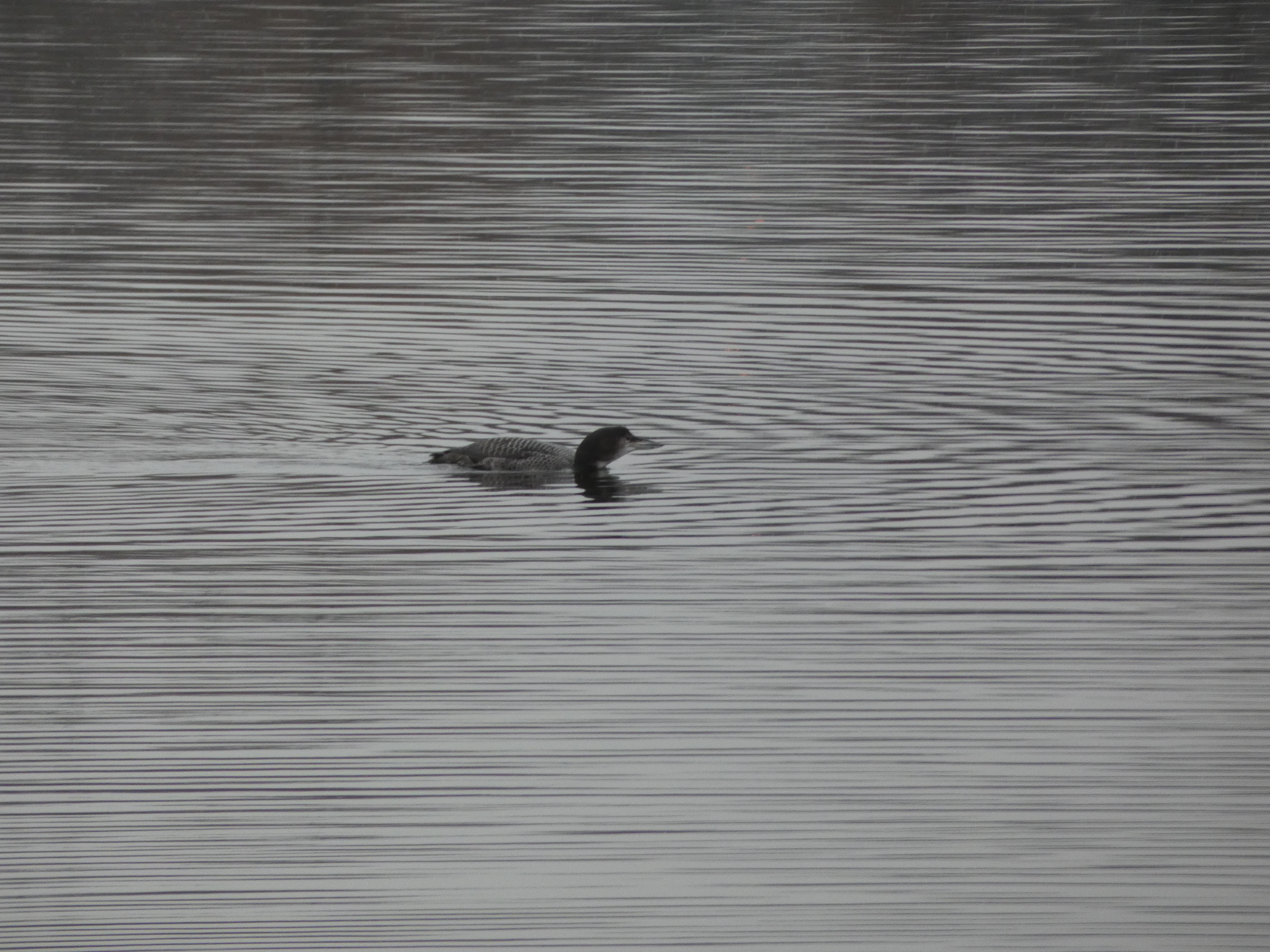
You can barely see the striped pattern and the large bill in this distant image of a Common Loon.
I can’t leave you hanging without a better image of these impressive birds:

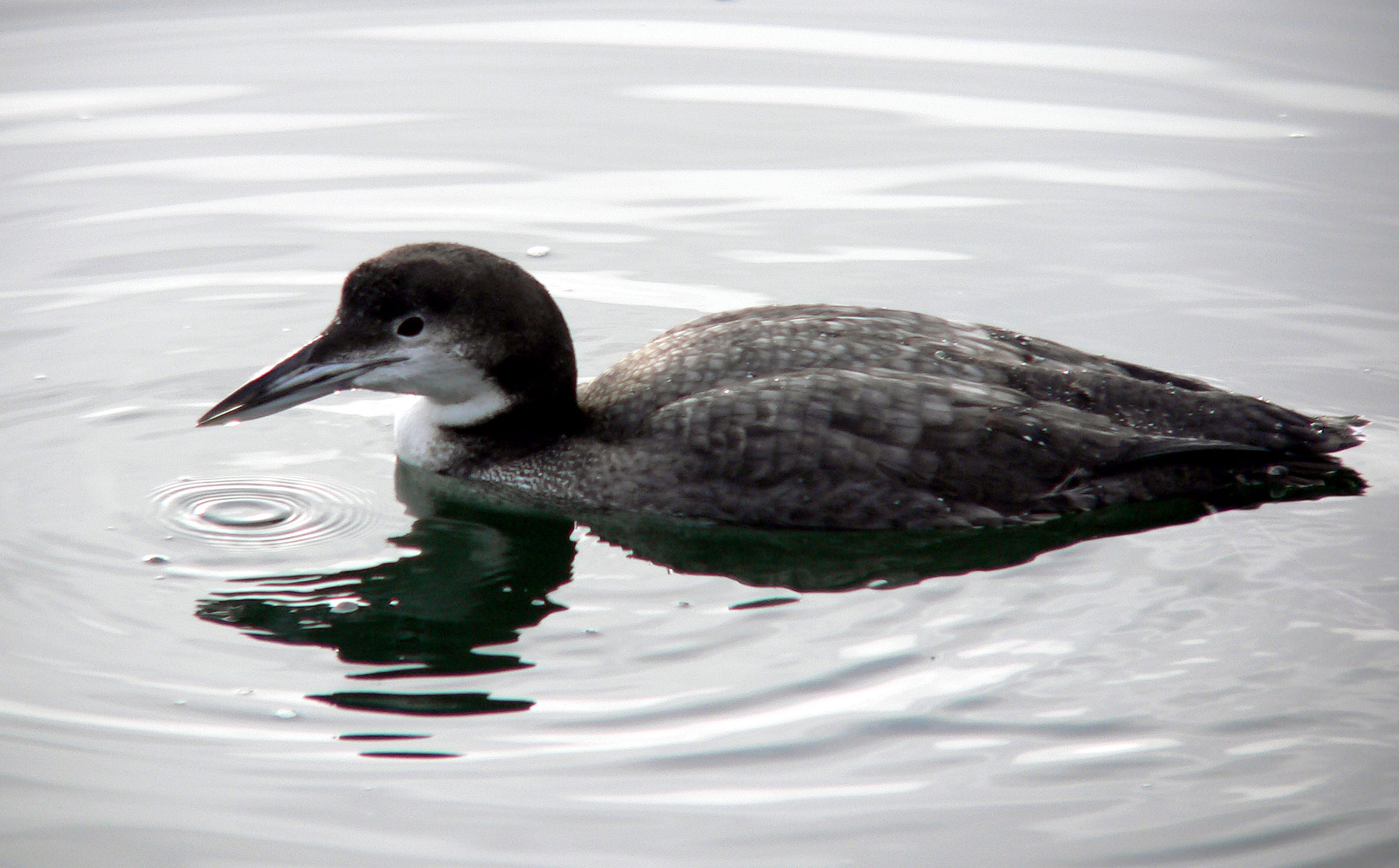
Common Loon in winter plumage.
We headed back to our starting place, tired but pleased with a lovely winter walk in the season’s first snow. Here are the eBird lists for out two locations:
Olmsted Park–Leverett Pond, Suffolk, Massachusetts, US
Dec 10, 2017 9:00 AM – 10:00 AM
Comments: BBC walk, 30, sunny, snow covered
12 species (+1 other taxa)
- Canada Goose 30
- Wood Duck 9
- Mallard 60
- Mallard (Domestic type) 1
- American Black Duck 4
- Ring-necked Duck 10
- Hooded Merganser 8
- Red-tailed Hawk 1
- Herring Gull 2
- Mourning Dove 1
- Blue Jay 1
- Tufted Titmouse 1
- House Sparrow 6
Jamaica Pond, Suffolk, Massachusetts, US
Dec 10, 2017 10:15 AM – 11:00 AM
Comments: BBC walk. 30,sunny, snow covered
12 species
- Mute Swan 3
- Gadwall 1 continuing female w coots
- Ring-necked Duck 1
- Hooded Merganser 1
- Ruddy Duck 22
- Common Loon 1
- Great Cormorant 1
- Red-tailed Hawk 2
- American Coot 11
- Ring-billed Gull 25
- Herring Gull 5
- House Sparrow 4
View this checklist online at http://ebird.org/ebird/view/checklist/S41008358
This report was generated automatically by eBird v3 (http://ebird.org)
This was my last walk of the year. On Sunday January 7th I will be leading a walk in the Arboretum beginning at 9 AM from the man gate on the Arborway, where we can all start our Year List for 2018! I hope you can join me.
Good Birding!
